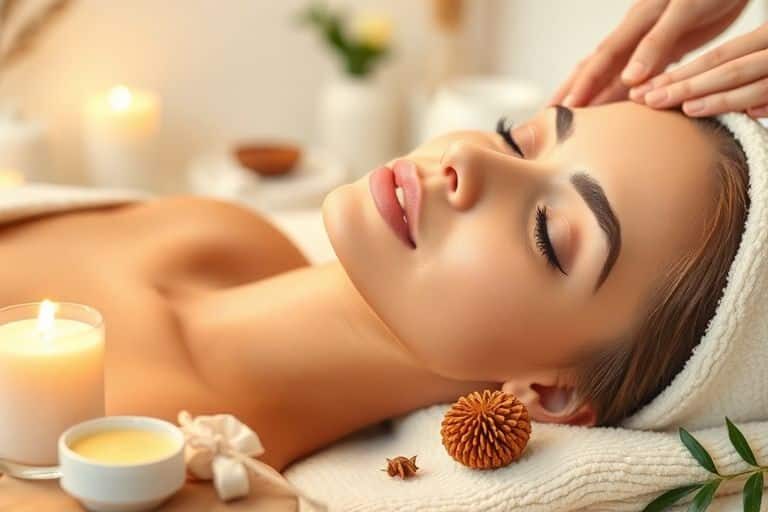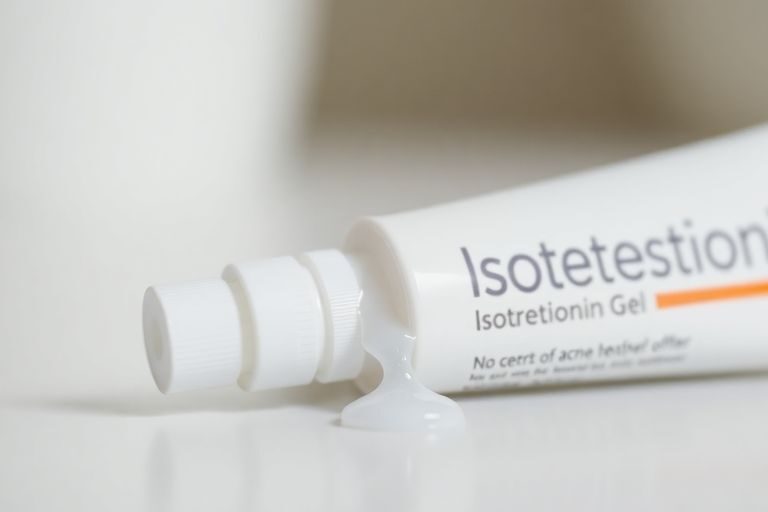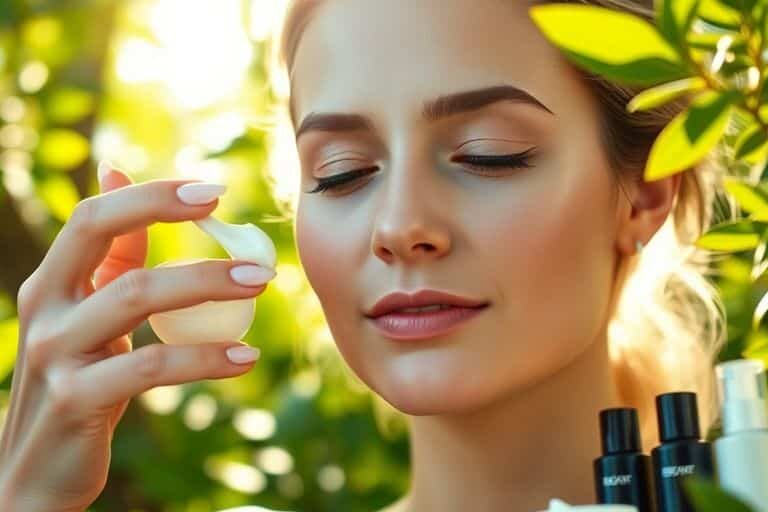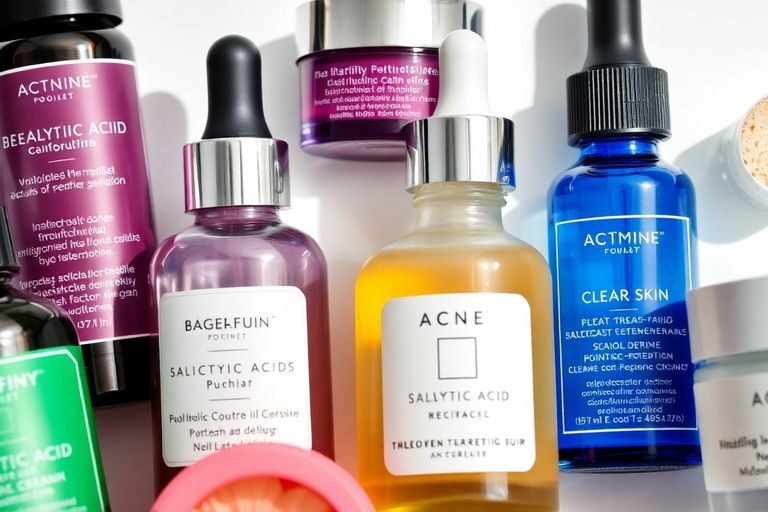As you step into your 30s, your skin starts to change in ways you might not expect. You may notice fine lines, a loss of elasticity, and perhaps even some uneven skin tone. It’s a time when taking care of your skin becomes more important than ever. Finding the best skin care set for 30s is essential to keep your complexion looking fresh and vibrant. In this article, we’ll explore what your skin needs during this decade and how to build a routine that works for you.
Key Takeaways
- Your skin undergoes hormonal changes in your 30s, making it crucial to adapt your skincare routine.
- Look for products with active ingredients like retinol and antioxidants to combat signs of ageing.
- Daily cleansing and moisturising are key to maintaining hydration and skin health.
- Never skip sunscreen; it’s vital for protecting your skin from UV damage and premature ageing.
- Personalised skincare routines are more effective, so consider consulting a professional to find what suits your skin type.
Understanding Your Skin’s Needs In Your 30s
As I’ve hit my 30s, I’ve realised my skin isn’t quite the same as it used to be. It’s like, overnight, things started changing! So, let’s get into what’s actually going on and how to tackle it.
The Impact Of Hormonal Changes
Hormones, eh? They mess with everything! In our 30s, hormone levels can start to fluctuate, and this can really affect the skin. For me, it’s meant dealing with unexpected breakouts, which is just great.
- Oestrogen levels can dip, leading to dryness.
- Hormonal changes can trigger acne.
- It can also affect skin’s elasticity.
Signs Of Ageing To Look Out For
Okay, so nobody wants to think about ageing, but being aware is half the battle. I’ve noticed a few things creeping in, like fine lines and a bit of dullness. It’s all part of the fun, right?
- Fine lines, especially around the eyes and mouth.
- Loss of elasticity, meaning skin doesn’t bounce back as quickly.
- Uneven skin tone and the appearance of hyperpigmentation.
Importance Of A Tailored Routine
What worked in my 20s just doesn’t cut it anymore. I’ve had to really think about what my skin actually needs now. A tailored routine is key. It’s not about just slapping on any old cream; it’s about understanding your skin and giving it what it craves.
It’s about finding the right balance of products and ingredients that address your specific concerns. What works for your best mate might not work for you, and that’s totally fine. It’s all about experimenting and finding what makes your skin happy.
Here’s a quick guide to get you started on building a skincare routine that works:
- Identify your skin type (oily, dry, combination, sensitive).
- Choose products specifically formulated for your skin type.
- Introduce new products gradually to see how your skin reacts.
Key Components Of The Best Skin Care Set For 30s
Alright, let’s get down to the nitty-gritty. What should actually be in your skincare set as you cruise through your 30s? It’s not about chasing every trend, but about building a solid foundation. I’m talking about the essentials that will keep your skin happy and healthy.
Essential Cleansers For Daily Use
Cleansing is where it all begins. Think of it as prepping a canvas before you paint. You wouldn’t start slapping colours on a dirty surface, would you? Same goes for your face.
- Morning cleanse: A gentle cleanser is your best bet to remove any overnight build-up.
- Evening cleanse: This is non-negotiable. You need to wash away makeup, pollution, and the day’s grime.
- Double cleansing (optional): If you wear heavy makeup, consider double cleansing. Start with an oil-based cleanser to dissolve makeup, followed by a gentle, water-based cleanser to clean deep into the pores.
Hydrating Serums That Deliver Results
Serums are the workhorses of any good skincare routine. They’re packed with concentrated ingredients designed to target specific concerns. For your 30s, hydration is key.
- Hyaluronic acid: This is a moisture magnet. It draws water into the skin, plumping it up and reducing the appearance of fine lines.
- Vitamin C: A powerhouse antioxidant that brightens the skin, protects against free radical damage, and boosts collagen production.
- Peptide serums: Peptides are building blocks of collagen. They help to firm the skin and reduce wrinkles.
Moisturisers To Lock In Hydration
Think of moisturiser as the sealant that keeps all the goodness in. It creates a barrier that prevents water loss and keeps your skin soft and supple.
- Daytime moisturiser: Look for a lightweight formula with SPF. Sun protection is a must, every single day.
- Nighttime moisturiser: A richer, more emollient formula can work wonders while you sleep.
- Ingredients to look for: Ceramides, shea butter, and natural oils are all great for locking in moisture.
Building a skincare routine isn’t about buying the most expensive products. It’s about understanding what your skin needs and choosing products that address those needs. Don’t be afraid to experiment and find what works best for you. And remember, consistency is key! Sticking to a routine, even a simple one, will give you better results than using a bunch of fancy products sporadically.
Consider exploring skincare gift sets for a curated collection of products designed to work together.
Incorporating Active Ingredients For Radiant Skin
As I’ve gotten older, I’ve realised that a basic skincare routine just doesn’t cut it anymore. That’s where active ingredients come in. They’re the powerhouses that can really transform your skin. Let’s explore how to add them to your routine.
Benefits Of Retinol In Your Routine
Retinol is basically the gold standard when it comes to anti-ageing. It’s a derivative of vitamin A, and it works by speeding up cell turnover. This means fresher, newer skin cells come to the surface faster, which can reduce the appearance of fine lines, wrinkles, and even acne. I started using retinol in my early 30s, and the difference it’s made to my skin’s texture and overall radiance is amazing.
- Reduces fine lines and wrinkles
- Improves skin texture
- Minimises pores
- Fades dark spots
Just a heads-up: retinol can be a bit irritating at first. Start with a low concentration and use it only a couple of times a week, gradually increasing the frequency as your skin gets used to it. And always, always wear sunscreen during the day, as retinol can make your skin more sensitive to the sun.
The Role Of Antioxidants
Think of antioxidants as your skin’s bodyguards. They protect against free radicals, which are unstable molecules that can damage skin cells and lead to premature ageing. Pollution, UV rays, and even stress can generate free radicals, so it’s important to have a good defence system in place. Vitamin C is a popular choice, known for brightening skin and evening out skin tone. Vitamin E is another great option, often paired with Vitamin C to boost its effectiveness.
- Protect against environmental damage
- Brighten skin
- Reduce inflammation
- Support collagen production
How To Use Exfoliating Acids
Exfoliating acids, like AHAs (alpha-hydroxy acids) and BHAs (beta-hydroxy acids), are fantastic for sloughing away dead skin cells and revealing a brighter, smoother complexion. AHAs, such as glycolic acid and lactic acid, are water-soluble and work on the surface of the skin. BHAs, like salicylic acid, are oil-soluble and can penetrate deeper into pores, making them great for treating acne and blackheads. I use an AHA serum a couple of times a week to keep my skin looking fresh and glowy.
- AHAs (Glycolic, Lactic Acid): Best for surface exfoliation and improving skin texture.
- BHAs (Salicylic Acid): Ideal for oily and acne-prone skin, as they clear pores.
- PHAs (Polyhydroxy Acids): A gentler option for sensitive skin, providing mild exfoliation.
It’s important not to overdo it with exfoliating acids, as this can lead to irritation and sensitivity. Start with a low concentration and use them sparingly, gradually increasing the frequency as your skin tolerates it. And remember to always wear sunscreen, as exfoliating acids can make your skin more susceptible to sun damage.
The Importance Of Sun Protection

I can’t stress enough how vital sun protection is, especially as we hit our 30s. It’s not just about avoiding sunburn on holiday; it’s a year-round commitment to keeping our skin healthy and youthful. Honestly, it’s the single most effective thing I do for my skin, and I wish I’d started taking it seriously sooner!
Choosing The Right SPF
Finding the right SPF can feel like a mission, but it’s worth the effort. I always aim for at least SPF 30, but SPF 50 is even better, especially during the summer months.
- Look for a broad-spectrum sunscreen sunscreen is essential, which means it protects against both UVA and UVB rays.
- Consider your skin type. If you’re oily, go for a lightweight, oil-free formula. If you’re dry, a hydrating sunscreen will be your best friend.
- Don’t forget about sensitive skin! Mineral sunscreens with zinc oxide or titanium dioxide are usually a safe bet.
Daily Application Tips
Applying sunscreen properly is just as important as choosing the right one. Here’s what I’ve learned over the years:
- Make it the last step in your morning skincare routine. Apply it after your moisturiser but before your makeup.
- Use enough! A good rule of thumb is about a teaspoon for your face and neck. Don’t skimp!
- Reapply every two hours, especially if you’re sweating or swimming. I keep a travel-sized sunscreen in my bag for easy touch-ups.
I used to think that applying sunscreen once in the morning was enough, but I quickly realised that reapplication is key. Now, I set a reminder on my phone to reapply every two hours, no matter what I’m doing. It’s become such a habit that I don’t even think about it anymore.
Long-Term Benefits Of Sun Protection
The benefits of consistent sun protection go way beyond just preventing sunburn. It’s an investment in your skin’s future. Here’s what I’ve noticed:
- Reduced risk of skin cancer. This is the most important benefit, hands down.
- Prevention of premature ageing. Sunscreen helps to prevent wrinkles, fine lines, and age spots. I’m all for ageing gracefully, but I’d rather do it on my own terms!
- Even skin tone. Sun damage can cause hyperpigmentation, so sunscreen helps to keep my complexion looking even and radiant.
Honestly, incorporating sunscreen into my daily routine has been a game-changer. It’s the best thing I’ve done for my skin, and I encourage everyone to make it a priority. You won’t regret it!
Personalised Skincare: Finding What Works For You
Let’s be real, skincare isn’t one-size-fits-all. What works wonders for your best mate might do absolutely nothing for you. That’s why figuring out what your skin actually needs is so important. It’s a bit of a journey, but trust me, it’s worth it. I’ve spent ages trying different things, and I’m still tweaking my routine!
Consulting With Skincare Professionals
Sometimes, you just need an expert opinion. I know I did! Popping in to see a dermatologist or even a trained aesthetician can be a game-changer. They can properly assess your skin, identify any underlying issues, and recommend products or treatments tailored to your specific needs. Plus, they can help you sort through all the confusing information out there. Services like Dermatica and Skin+Me offer online consultations with qualified dermatologists, who will build you a personalised treatment plan. Personalised formulas only contain ingredients that have been through clinical trials.
Understanding Your Skin Type
Knowing your skin type is the first step to building a routine that actually works. Are you oily, dry, combination, or sensitive? Each type has its own unique needs. For example, if you’re oily, you’ll want to focus on oil-free and non-comedogenic products. If you’re dry, hydration is your best friend. I’ve found that my skin changes with the seasons, so I adjust my routine accordingly.
- Oily Skin: Look for lightweight, oil-free formulas.
- Dry Skin: Focus on hydrating ingredients like hyaluronic acid and ceramides.
- Combination Skin: Balance is key! Use different products on different areas of your face.
- Sensitive Skin: Opt for gentle, fragrance-free products to avoid irritation.
Adjusting Your Routine As You Age
What worked in your 20s might not cut it in your 30s. As we age, our skin’s needs change. You might notice more dryness, fine lines, or hyperpigmentation. That’s why it’s important to reassess your routine regularly and make adjustments as needed. Maybe it’s time to add in a retinol or switch to a richer moisturiser. Don’t be afraid to experiment and see what works best for your evolving skin. I’m constantly tweaking my routine to keep up with my skin’s demands. For example, I’ve wanted to move onto tretinoin for fine lines, which is a touch stronger and works to target fine lines as well as acne.
It’s all about listening to your skin and giving it what it needs. Don’t be afraid to try new things, but always patch-test first to avoid any unwanted reactions. And remember, consistency is key! A good routine takes time to show results, so be patient and stick with it.
Common Skin Concerns In Your 30s
As I’ve moved through my 30s, I’ve noticed a few skin changes that seem pretty common among my friends too. It’s like our skin is waving a little flag saying, ‘Hey, we need some extra attention now!’ It’s not all doom and gloom, though. Knowing what to expect means we can tackle these issues head-on.
Dealing With Dullness
One of the first things I noticed was a lack of that youthful glow. My skin just didn’t seem as radiant as it used to. This dullness is often due to a slower skin cell turnover. Basically, the old cells aren’t shedding as quickly, leaving my complexion looking a bit blah.
To combat this, I’ve found a few things that really help:
- Exfoliating regularly: This helps to sleugh off those dead skin cells and reveal the brighter skin underneath. I like using a gentle scrub a couple of times a week.
- Using a Vitamin C serum: Vitamin C is amazing for brightening the skin and protecting it from environmental damage. I apply it in the morning before my moisturiser.
- Staying hydrated: Drinking plenty of water helps to keep my skin plump and hydrated, which makes a big difference in its overall appearance.
Managing Fine Lines And Wrinkles
Okay, let’s be real – the appearance of fine lines is probably the biggest skin concern for most of us in our 30s. I started noticing them around my eyes and mouth, and while they’re a natural part of ageing, I definitely want to keep them at bay for as long as possible.
Here’s what I’m doing to manage them:
- Retinol: This is a powerhouse ingredient that helps to boost collagen production and reduce the appearance of wrinkles. I use it at night, starting with a low concentration and gradually increasing it as my skin gets used to it.
- Hyaluronic acid: This is a humectant, which means it draws moisture into the skin, plumping it up and reducing the appearance of fine lines. I use it in my serum and moisturiser.
- Sunscreen: This is non-negotiable! Sun damage is a major cause of premature ageing, so I wear sunscreen every day, even when it’s cloudy. Choosing the right SPF is important.
It’s important to remember that fine lines and wrinkles are a natural part of ageing, and there’s nothing wrong with having them. However, if they bother you, there are plenty of things you can do to minimise their appearance.
Addressing Hyperpigmentation
Another common issue I’ve noticed is hyperpigmentation, those pesky dark spots that pop up due to sun damage or hormonal changes. They can be a bit stubborn to get rid of, but with the right products and patience, it’s definitely possible to fade them.
Here’s my approach:
- Vitamin C: Again, this is a great ingredient for brightening the skin and fading dark spots. I use it religiously.
- AHAs (Alpha Hydroxy Acids): These exfoliating acids help to sleugh off the pigmented skin cells and reveal brighter skin underneath. I use an AHA toner a few times a week.
- SPF: Preventing further sun damage is key to stopping more dark spots from forming. I reapply sunscreen throughout the day, especially if I’m spending time outdoors. Adult acne can also cause hyperpigmentation.
Dealing with these common skin concerns in my 30s has been a journey of trial and error, but I’m finally starting to feel like I have a routine that works for me. Remember, everyone’s skin is different, so it’s all about finding what works best for you!
Building A Sustainable Skincare Routine

Okay, so you’ve got your cleansers, serums, and SPF sorted. But how do you make sure this whole skincare thing sticks? It’s all about building a routine that’s not only effective but also easy to maintain in the long run. Here’s what I’ve learned about creating a sustainable skincare routine that actually works.
Daily Habits For Healthy Skin
It’s the little things you do every day that really add up. Think of it like brushing your teeth – you wouldn’t skip it, right? Your skincare should be the same. Consistency is key when it comes to seeing real results.
- Morning Routine: Keep it simple. Cleanser, antioxidant serum, moisturiser, and SPF. Don’t overcomplicate things.
- Evening Routine: This is where you can bring out the big guns. Cleanser, retinol (if you’re using it), hydrating serum, and a richer moisturiser.
- Listen to Your Skin: Some days, your skin might need more hydration; other days, it might need a break from active ingredients. Pay attention and adjust accordingly. For example, if you’re dealing with dull skin, you might want to add an extra exfoliating step.
The Role Of Diet And Hydration
What you put inside your body is just as important as what you put on it. I know, I know, you’ve heard it all before, but it’s true! A healthy diet and plenty of water can make a huge difference to your skin.
- Hydration: Aim for at least 8 glasses of water a day. Dehydration can lead to dry, dull skin and can make fine lines more noticeable.
- Antioxidants: Load up on fruits and vegetables rich in antioxidants. These help protect your skin from damage caused by free radicals.
- Healthy Fats: Include sources of healthy fats in your diet, such as avocados, nuts, and oily fish. These help keep your skin moisturised and supple.
I’ve found that when I eat well and stay hydrated, my skin just looks and feels better. It’s like it has a natural glow. Plus, it helps with overall energy levels, which is always a bonus!
Avoiding Common Skincare Mistakes
We’ve all been there – trying a new product that everyone raves about, only to end up with irritated skin. Here are some common mistakes to avoid:
- Over-Exfoliating: Exfoliating is great, but doing it too often can strip your skin of its natural oils and cause irritation. Stick to 1-2 times a week.
- Using Too Many Active Ingredients: Don’t bombard your skin with too many active ingredients at once. Introduce them gradually and see how your skin reacts.
- Ignoring Your Skin Type: What works for your friend might not work for you. Make sure you’re using products that are suitable for your skin type. If you’re not sure, it’s worth consulting with skincare professionals to get personalised advice.
- Not Being Patient: Skincare takes time. Don’t expect to see results overnight. Give products at least a few weeks to work before deciding whether they’re right for you.
Building a sustainable skincare routine is all about finding what works for you and sticking with it. It’s not about following trends or using every product under the sun. It’s about creating a simple, effective routine that you can maintain in the long run. And remember, consistency is key!
Final Thoughts on Your 30s Skincare Journey
So there you have it! Taking care of your skin in your 30s doesn’t have to be complicated. With the right products and a bit of consistency, you can keep your skin looking fresh and vibrant. Remember, it’s all about finding what works for you. Whether it’s a gentle cleanser, a nourishing moisturiser, or a powerful serum, each step counts. Don’t forget to listen to your skin and adjust your routine as needed. And if you’re ever in doubt, consulting a skincare professional can provide tailored advice. Here’s to embracing your 30s with confidence and glowing skin!
Frequently Asked Questions
What changes should I expect in my skin during my 30s?
In your 30s, you might notice your skin becoming drier or showing fine lines. Hormonal changes can also cause uneven skin tone and larger pores.
Is it too late to start a skincare routine in my 30s?
Not at all! It’s never too late to start caring for your skin. The sooner you begin a good routine, the better your skin will look in the long run.
What are the best products to use in my 30s?
A good skincare set for your 30s should include a cleanser, moisturiser, sunscreen, and serums with ingredients like retinol and antioxidants.
How often should I use exfoliating products?
You can exfoliate 1-3 times a week, depending on your skin type. This helps remove dead skin cells and keeps your skin looking fresh.
How important is sun protection for my skin?
Very important! Daily use of sunscreen helps prevent sun damage, which can lead to premature ageing and other skin issues.
What should I do if I have specific skin concerns?
If you have particular issues like acne or pigmentation, consider consulting a skincare professional for personalised advice.





